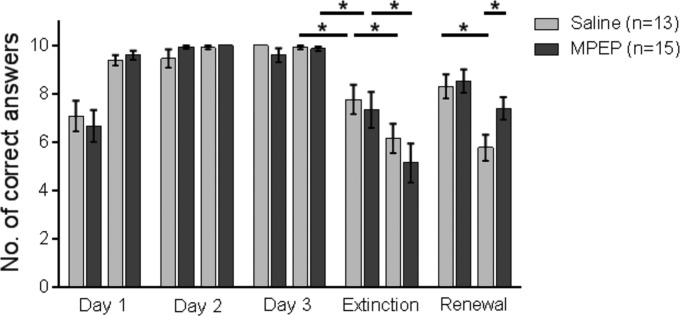FIGURE 3.

Antagonism of mGlu5 selectively prevents extinction of the A context in the ABA paradigm, although extinction in the B context is unaffected. Animals underwent 20 contiguous trials per day of training in the ABA paradigm. Bar charts represent the percentage of correct arm choices in the first and second set of 10 trials on each test day. Animals participated in 3 days of acquisition training in the ABA paradigm, ending on Day 3 with a 25% reward probability. Control animals were treated with vehicle before exposure to the novel Context “B” on Day 4, in the absence of reward. Here, by the second set of 10 trials significant extinction was evident that was also significantly better than extinction learning under the same conditions in the “A” context. Upon being returned to the same context on Day 5 (without reward) an initial recovery of the learned CS–US response was evident in the first set of 10 trials that was followed by significant extinction of the CS–US response. Treatment of animals with the mGlu5 antagonist, MPEP, before novel exposure to the “B” context in the absence of reward on Day 4 had no effect on extinction learning. A return to the same context on Day 5 resulted in an initial recovery of the learned CS–US response (in the first 10 trials), but no extinction of the recovered response was evident, i.e., an inhibition of extinction learning of the “A” context occurred. An asterisk indicates a significant effect of at least P < 0.01 between the trials indicated by the bar.
